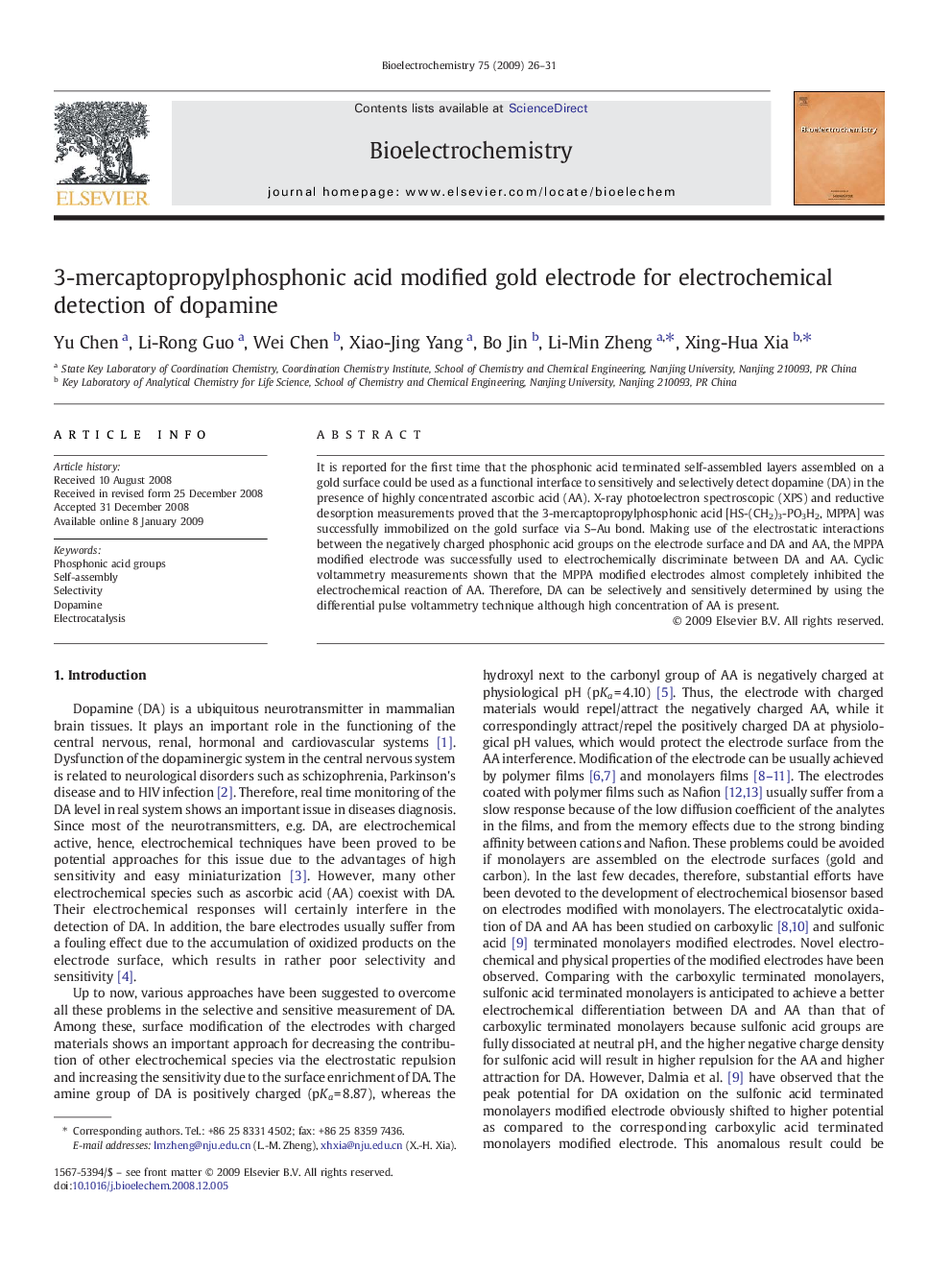| Article ID | Journal | Published Year | Pages | File Type |
|---|---|---|---|---|
| 1268891 | Bioelectrochemistry | 2009 | 6 Pages |
It is reported for the first time that the phosphonic acid terminated self-assembled layers assembled on a gold surface could be used as a functional interface to sensitively and selectively detect dopamine (DA) in the presence of highly concentrated ascorbic acid (AA). X-ray photoelectron spectroscopic (XPS) and reductive desorption measurements proved that the 3-mercaptopropylphosphonic acid [HS-(CH2)3-PO3H2, MPPA] was successfully immobilized on the gold surface via S–Au bond. Making use of the electrostatic interactions between the negatively charged phosphonic acid groups on the electrode surface and DA and AA, the MPPA modified electrode was successfully used to electrochemically discriminate between DA and AA. Cyclic voltammetry measurements shown that the MPPA modified electrodes almost completely inhibited the electrochemical reaction of AA. Therefore, DA can be selectively and sensitively determined by using the differential pulse voltammetry technique although high concentration of AA is present.
